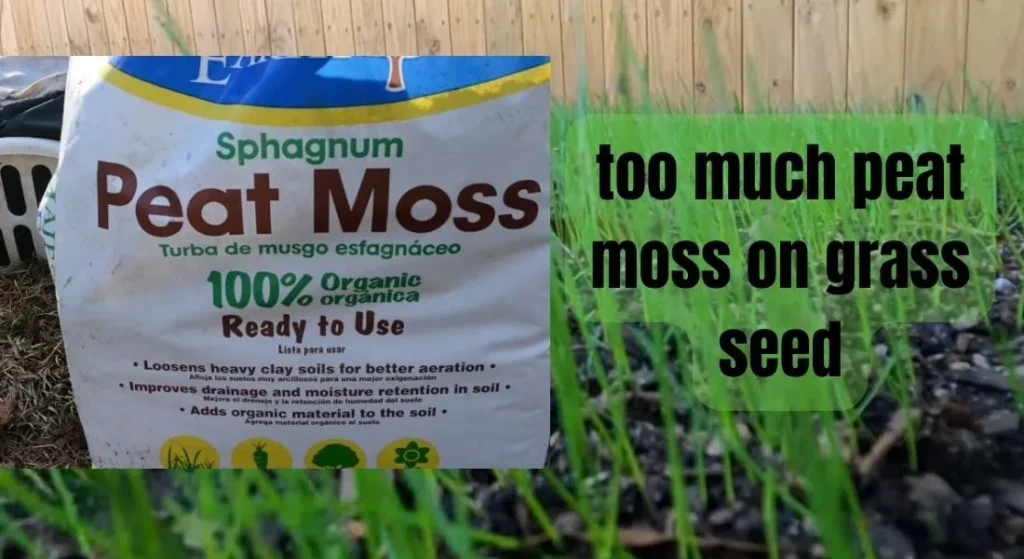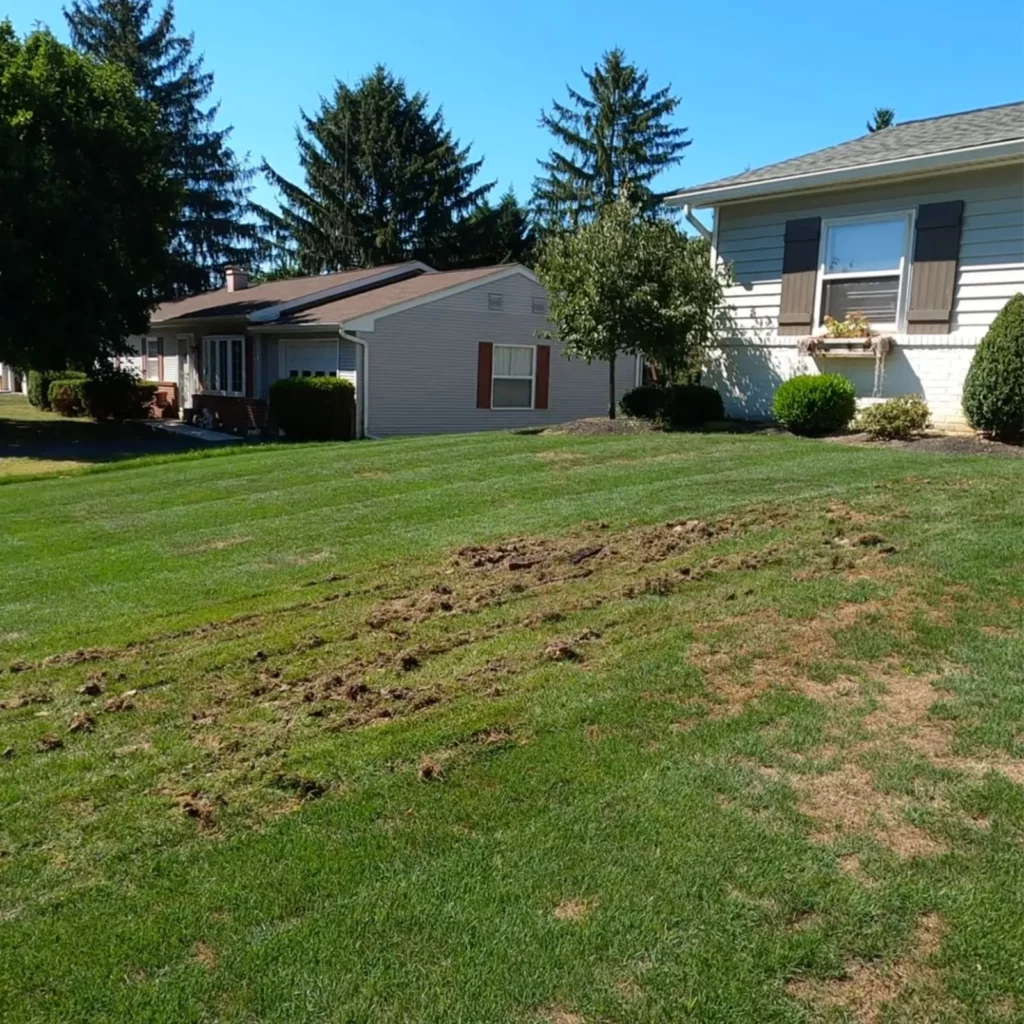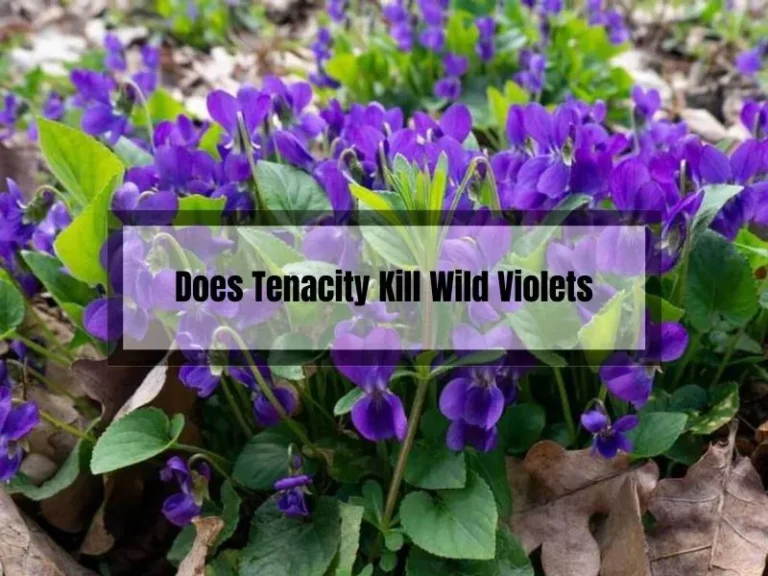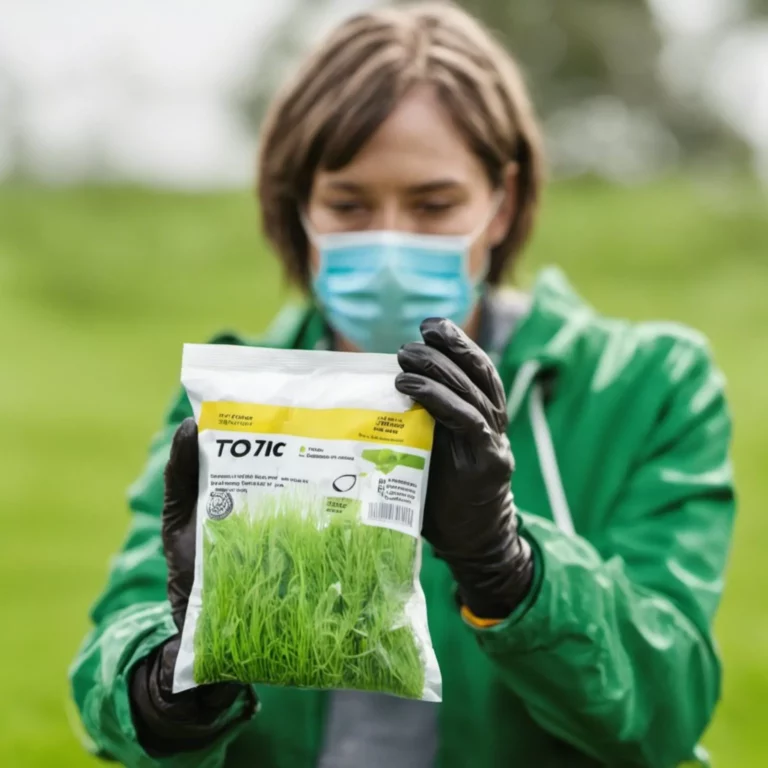Too Much Peat Moss on Grass Seed: How to Avoid Common Mistakes
Are you looking to maintain a lush and healthy lawn? You might have heard about using peat moss to aid grass seed germination.
While peat moss can be valuable in establishing a vibrant lawn, overusing it can lead to several issues, such as poor seed germination, soil acidification, and nutrient limitations.
Excessive peat moss application creates overly acidic conditions for proper grass seed growth, resulting in poor germination and redundant growth, ultimately leading to a patchy, unhealthy lawn.
Additionally, it can cause soil acidification, limiting nutrient availability and harming the environment. So, how can you use peat moss correctly for your grass seed?
Key Takeaways
- Using too much peat moss on grass seed can lead to poor seed germination, soil acidification, and limited nutrient availability.
- It is important to use peat moss in moderation to ensure proper grass seed growth.
- Correct use of peat moss on grass seed can help establish a healthy and vibrant lawn.

Too Much Peat Moss on Grass Seed
You’ve heard that peat moss can be a great addition to your grass seed, but did you know that using too much can actually harm your lawn?
Here’s what you need to know about the dangers of using too much peat moss on grass seed.
Compromised Drainage
While peat moss’s ability to retain moisture is beneficial, excessive use can lead to a counterproductive outcome.
Peat moss can hinder proper drainage when applied excessively, causing water to accumulate around the grass seeds. This excess moisture can lead to soggy soil, which can be detrimental to grass growth.
Oxygen Deficiency
One of the main challenges of using too much peat moss on grass seed is the potential oxygen deficiency.
Peat moss has a dense and compact texture, which can limit the oxygen supply to the seeds if overused. Insufficient oxygen hinders seed germination and can lead to weak or stunted growth.
Soil Acidity
Peat moss is naturally acidic, which can lead to soil acidity if overused. This can be harmful to grass growth, as most grasses prefer a neutral pH.
If you’re using peat moss on your lawn, it’s important to monitor the pH levels and adjust as necessary.
Redundant Growth
Using too much peat moss can also lead to redundant growth, where grass blades grow excessively long and thin. This can make your lawn look unkempt and can be difficult to maintain.
Limited Nutrient Availability
While peat moss can be a good source of nutrients for your lawn, using too much can actually limit nutrient availability.
This is because peat moss can bind to nutrients in the soil, making them unavailable to the grass roots.
High Costs
Finally, using too much peat moss on your lawn can be costly. Peat moss can be expensive, and using too much can mean you need to purchase more than necessary.
Additionally, the negative effects of using too much peat moss can mean you need to spend more money on lawn care and maintenance.
Effects of Excessive Peat Moss on Grass Seed

When it comes to planting grass seed, peat moss is a popular choice to improve soil quality and seed germination.
However, using too much peat moss on grass seed can have negative effects on your lawn. In this section, we’ll explore the potential consequences of excessive peat moss use on grass seed.
Inhibition of Germination
One of the main problems with using too much peat moss on grass seed is the inhibition of germination. Peat moss has a dense and compact texture that can limit the oxygen supply to the seeds if overused.
Insufficient oxygen hinders seed germination and can lead to weak or stunted growth. Additionally, if peat moss is not properly mixed with soil, it can create a barrier that prevents seeds from coming into contact with the soil, further inhibiting germination.
Alteration of Soil pH
Peat moss is naturally acidic, with a pH range of 3.5 to 4.5. If too much peat moss is used, it can alter the pH of the soil, making it too acidic for grass seed to grow.
This can lead to poor seed germination, stunted growth, and an increased risk of diseases and fungal problems.
Water Retention Issues
While peat moss is known for its ability to retain moisture, using too much of it can lead to water retention issues. Excessive peat moss can create a waterlogged environment that suffocates the roots of grass seedlings. This can lead to root rot, which can be fatal to young grass plants.
To avoid these negative effects, it’s important to use peat moss in moderation. A balanced peat moss-to-soil ratio is ideal for grass seeds since it retains moisture and nutrients, enhances good grass seed germination, and provides a healthy environment for roots to grow.
Preventing Overuse of Peat Moss
When it comes to using peat moss on grass seed, it is important to know that too much of a good thing can actually be bad. Here are some tips to help you prevent overusing peat moss on your lawn:
1. Follow the Manufacturer’s Recommendations
Different types of peat moss may require different application rates. It is important to follow the manufacturer’s recommendations for the specific type of peat moss you are using. This will help you avoid overusing peat moss and ensure that you are applying it correctly.
2. Use Peat Moss Sparingly
As a general guideline, you can use peat moss at a rate of 1 to 3 cubic feet per 100 square feet of area.
Using too much peat moss can lead to supersaturation and poor drainage, which can delay germination and stunt root development.
3. Test Your Soil
Before applying peat moss, it is a good idea to test your soil to determine its pH level and nutrient content.
This will help you determine whether or not you need to add peat moss to your soil, and how much to add.
4. Mix Peat Moss with Other Amendments
Peat moss can be mixed with other soil amendments, such as compost or vermiculite, to improve soil structure and water retention. This will help you avoid overusing peat moss while still reaping its benefits.
5. Water Your Lawn Regularly
Watering your lawn regularly will help prevent peat moss from drying out and becoming hydrophobic. This will ensure that your grass seeds have access to the moisture they need to germinate and grow.
By following these tips, you can prevent overusing peat moss on your lawn and ensure that your grass seeds have the best chance of germinating and growing into a healthy lawn.
How to Apply Peat Moss to Grass Seed

Are you looking for a way to improve your lawn’s health? Peat moss can help you achieve that goal. It is an organic soil amendment that can improve soil structure, water retention, and nutrient availability. Applying peat moss to grass seed is easy, but timing is key.
learn how to using peat moss
The Best Time to Apply Peat Moss to Grass Seed
The best time to apply peat moss to grass seed is after you have planted the seeds. You can also add peat moss before planting, but it should be done at least two weeks before planting to allow the soil to settle.
Adding peat moss after planting ensures that the seeds are in contact with the soil, which is essential for germination.
How to Apply Peat Moss to Grass Seed
Here are the steps to follow when applying peat moss to grass seed:
- Spread the grass seed evenly over the soil. Follow the package instructions to determine how much seed to apply.
- Load the compost spreader with peat moss.
- Spread the peat moss ⅛-¼ of an inch deep over the grass seed. Be careful not to apply too much peat moss, as it can cause poor drainage and soil acidification.
- Use a rake or lawn roller to ensure that the peat moss is in contact with the soil.
- Water the area lightly to moisten the peat moss and seeds. Avoid overwatering, as it can wash away the seeds.
Here are some tips to keep in mind when applying peat moss to grass seed:
- Use high-quality peat moss that is free of weed seeds and other contaminants.
- Don’t apply peat moss to compacted soil. Aerate the soil before applying peat moss to improve its effectiveness.
- Avoid applying too much peat moss, as it can cause soil acidity and poor drainage.
- Always follow the package instructions for grass seed and peat moss application rates.
With these tips, you can apply peat moss to grass seed and improve your lawn’s health. Remember to be patient, as it can take several weeks for the grass to germinate and grow. Good luck!
Application Techniques
Once you have determined the right amount of peat moss for your situation, it is important to apply it correctly. Here are some tips for applying peat moss to grass seed:
- Mix peat moss with soil: Before planting grass seed, mix the peat moss with the soil to ensure even distribution.
- Spread evenly: Spread the peat moss mixture evenly over the soil to prevent clumping and ensure consistent coverage.
- Water thoroughly: After applying the peat moss, water the area thoroughly to help settle the peat moss and ensure proper seed growth.
By following these tips, you can ensure that you are using peat moss correctly and giving your grass seeds the best chance for success.
Alternatives to Peat Moss for Grass Seed Germination
When it comes to germinating grass seed, peat moss is a popular choice due to its ability to retain moisture and provide a good growing environment.
However, peat moss is not always the best option for the environment, as it is often harvested from wetlands, which can damage the ecosystem. If you’re looking for alternatives to peat moss for grass seed germination, there are several options available.
Organic Alternatives to Peat Moss
Compost is a great organic alternative to peat moss. It is rich in microorganisms that benefit the soil in numerous ways and provides nutritional value. Compost also helps improve drainage, attracts earthworms, and helps plants maintain the moisture they need. You can make your own compost or purchase it from a garden center.
Coconut coir is another organic alternative to peat moss. It is made from the fibers of coconut husks and is a renewable resource. Coconut coir is also pH neutral and does not contain any nutrients, making it a great option for starting seeds.
Inorganic Alternatives to Peat Moss
Vermiculite is a popular inorganic alternative to peat moss. It is a natural mineral that is heated and expanded to create a lightweight, sterile, and moisture-retaining material. Vermiculite is often used in seed starting mixes because it helps with water retention and aeration.
Perlite is another inorganic alternative to peat moss. It is a volcanic rock that is heated and expanded to create a lightweight, sterile, and moisture-retaining material. Perlite is often used in seed starting mixes because it helps with water retention and aeration.
When choosing an alternative to peat moss, it’s important to consider the specific needs of your grass seed. Some grasses prefer a slightly acidic soil, while others prefer a neutral pH. Be sure to choose an alternative that is appropriate for your grass seed and provides the necessary growing environment.
Frequently Asked Questions About Using Peat Moss on Grass Seed
If you’re new to using peat moss on grass seed, you probably have a lot of questions. Here are some frequently asked questions to help you get started:
Can You Mix Peat Moss and Grass Seed?
Yes, you can mix peat moss and grass seed together. In fact, this is a common method for planting grass seed. Simply mix the grass seed and peat moss together in a bucket or wheelbarrow, and then spread the mixture evenly over the soil. This will help to ensure that the grass seed is evenly distributed and has good contact with the soil.
How Often Should You Water Grass Seed with Peat Moss?
When you’re planting grass seed with peat moss, it’s important to keep the soil moist until the grass seed has germinated. This usually means watering the soil every day or every other day, depending on the weather. Once the grass has started to grow, you can reduce the frequency of watering.
Can You Overseed with Peat Moss?
Yes, you can use peat moss when overseeding your lawn. Simply spread a thin layer of peat moss over the existing grass, and then spread the grass seed on top of the peat moss. This will help to protect the grass seed from birds and other animals, and it will also help to retain moisture in the soil.
Can You Use Peat Moss on Established Lawns?
Yes, you can use peat moss on established lawns. Peat moss can help to improve the soil structure and increase water retention. Simply spread a thin layer of peat moss over the lawn, and then water it in thoroughly. Be careful not to use too much peat moss, as this can cause soil acidity and poor drainage.
Conclusion
In conclusion, when it comes to using peat moss on grass seed, less is more. Overuse can cause drainage problems and soil acidification, which can harm the growth of your lawn. To ensure optimal results, apply a thin layer of peat moss, about 1/8 inch to 1/2 inch, and care for your lawn properly through regular watering, mowing, and fertilization.
It’s also important to consider the environmental impact of peat moss harvesting and use alternatives when possible. By following these tips, you can grow a healthy and green lawn while also protecting the planet.
Related Posts:
- Breathe Life into Your Lawn: Top 5 Natural Methods for Soil Enrichment
- Master the Art of Gardening: A Comprehensive Guide to Using Peat Moss Spreaders
- The True Impact of Rotavating on Weeds: Breaking Down the Myths
- Boost Your Rhubarb Growth: All About Using Miracle-Gro for Maximum Yield
- Nourish Your Rhubarb Naturally: Top 5 Organic Fertilizers for Optimum Growth





